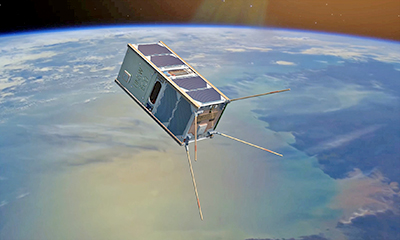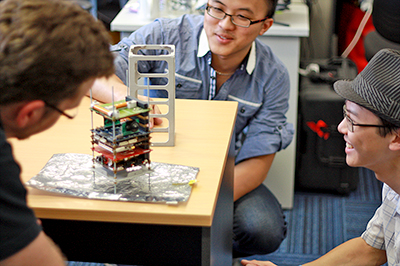Downunder satellites go up, over
AUSTRALIAN satellites successfully launched in April will not only support Australian Defence Force capabilities but will also help to rejuvenate the nation’s space research.
The satellite systems have been developed for several different tasks by a range of Australian universities.
The main satellite, called Biarri Point, was launched from Cape Canaveral in the US and carried to the International Space Station (ISS) aboard an Orbital ATK/Cygnus OA-7 cargo craft carried into orbit by an Atlas V rocket.
Defence Industry Minister Christopher Pyne said the Australian satellites were part of a re-supply mission to the ISS. Biarri Point is a satellite developed by the US but as part of its payload it has GPS technology developed by the University of New South Wales (UNSW) Sydney in partnership with Defence Science and Technology (DST) Group. 
The Biarri satellite and several other small satellites developed by Australian university teams will be steadily deployed from the ISS.
“The crew of the ISS will load the Biarri satellite along with other small satellites into the launcher later to be deployed into their own orbits by early July,” Mr Pyne said. “After the satellites launch from the ISS, the Biarri satellite will be switched on and commence its mission of less than one year.”
Mr Pyne said Biarri carried a GPS technology payload developed by UNSW and was integrated into the satellite by DST to conduct a range of experiments involving Australian facilities, such as Mount Stromlo Observatory in Canberra.
“The experiments are aimed at increasing our understanding of outer atmospheric effects on small satellites and improve our situation awareness of space,” Mr Pyne said.
“The 2016 Defence White Paper highlights the importance of space-based systems for information gathering, communications, navigation and surveillance for all ADF and coalition operations.
“Advances in small low cost space platforms provide a unique opportunity to support Australian Defence Force capabilities and to rejuvenate Australian space research,” he said. 
On the same mission are the SuSAT satellite from the University of Adelaide and the University of South Australia, the UNSW-ECO satellite from UNSW and INSPIRE 2 from the University of Sydney, University of New South Wales and Australian National University.
All are part of the multi-national, multi-university QB50 program, in which 27 countries are launching 50 small CubeSat units to analyse Earth’s thermosphere..
ends

 How to resolve AdBlock issue?
How to resolve AdBlock issue?